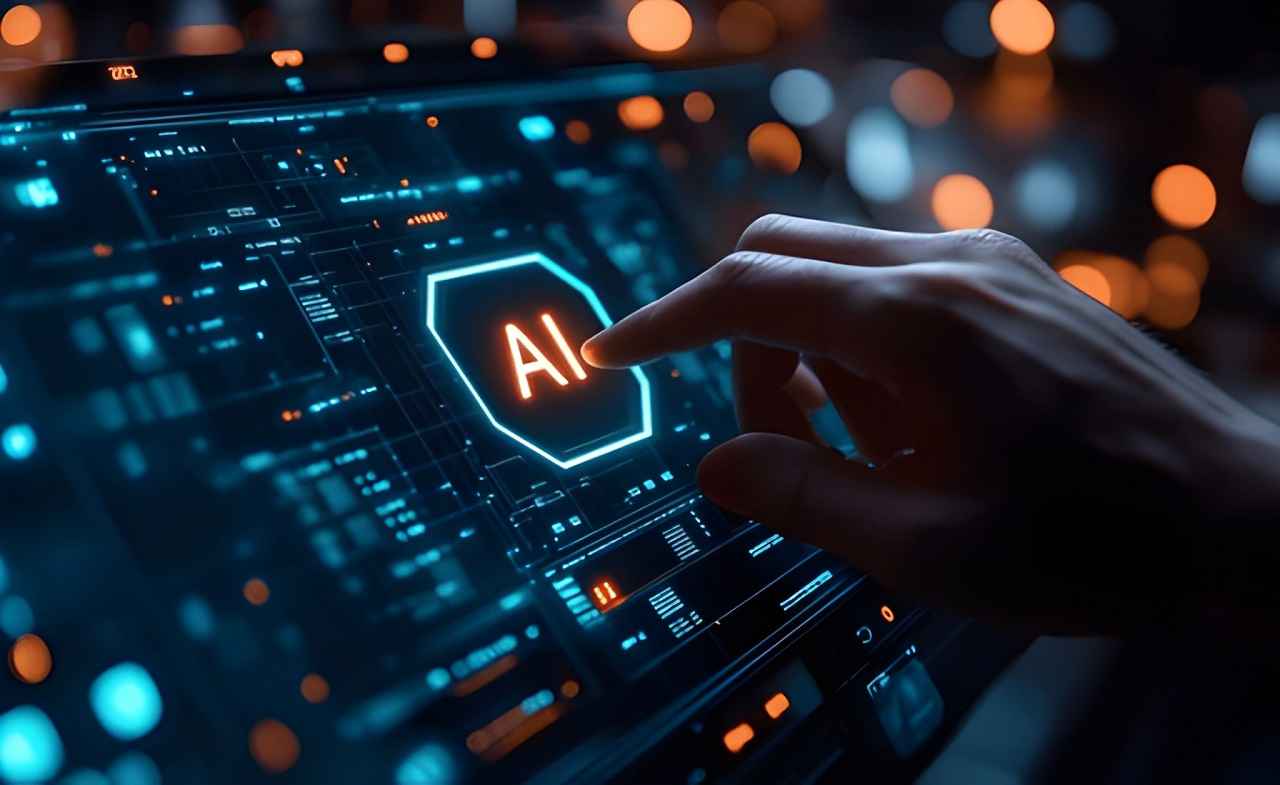It’s 2025, and your coffee machine not only brews your morning latte but also predicts when you’ll need a caffeine hit based on your calendar and stress levels. Welcome to the world of AI automation, where machines are getting smarter, businesses are getting leaner, and humans are left wondering if they should hug or high-five their robot coworkers. In 2025, AI automation is no longer just a sci-fi dream—it’s a game-changer for businesses worldwide. From streamlining operations to making customers feel like VIPs, AI is reshaping how companies function. Let’s dive into the top trends in AI automation for 2025, with a sprinkle of humor to keep things light, because who said tech talk has to be boring?
1. Hyper-Personalization: AI That Knows You Better Than Your Mom
Gone are the days of generic email blasts that scream, “We don’t know you, but buy our stuff!” In 2025, AI-driven hyper-personalization is taking customer experiences to a whole new level. Imagine AI systems that analyze your purchase history, browsing habits, and even your Spotify playlist to tailor recommendations so spot-on, you’ll think they’ve been stalking you (in a nice way, of course).
Businesses are using machine learning algorithms to sift through mountains of data and deliver customized experiences in real-time. Retailers, for example, can now suggest products based on your mood—detected through your social media posts or even facial recognition tech at stores (don’t worry, it’s less creepy than it sounds). According to a McKinsey report, companies that nail personalization can boost revenues by 5-15%. That’s not pocket change!
Why it matters: Hyper-personalization builds trust and loyalty. Customers love feeling special, and AI makes it scalable. Whether it’s a tailored discount or a curated playlist for your gym session, businesses are using AI to make you feel like the star of their show. Just don’t ask your AI assistant to write your mom a birthday card—it might get too personal.
2. Robotic Process Automation (RPA): The Office Intern That Never Sleeps
If you’ve ever spent hours copying data from one spreadsheet to another, you’ll want to kiss Robotic Process Automation (RPA). Okay, maybe not kiss, but definitely send it a thank-you note. RPA is like the ultimate office intern—tireless, efficient, and doesn’t complain about making coffee runs. In 2025, RPA is taking over repetitive tasks like invoicing, data entry, and customer support ticketing.
By combining RPA with AI, businesses are creating smart bots that don’t just follow rules but learn and adapt. For instance, an AI-powered bot can process customer refunds, detect fraud patterns, and even respond to emails with a politeness level that would make your grandma proud. The result? Employees are freed up to focus on creative, high-value tasks, like brainstorming the next big marketing campaign or finally figuring out how to use the office espresso machine.
Why it matters: RPA saves time and money. Gartner predicts that by 2025, 90% of large organizations will adopt RPA in some form, slashing operational costs by up to 30%. Plus, it reduces human error—because let’s face it, humans are great at creativity but terrible at not typos.
3. AI-Powered Supply Chain Magic
Supply chains are the backbone of any business, but they’re also a logistical nightmare. Enter AI automation, the fairy godmother of supply chains in 2025. AI is transforming supply chains by predicting demand, optimizing inventory, and even rerouting shipments faster than you can say, “Where’s my package?”
Using predictive analytics, AI systems analyze historical data, weather patterns, and even social media trends to forecast demand with spooky accuracy. For example, a retailer might use AI to predict a spike in demand for umbrellas based on a rainy weather forecast and trending TikTok videos about monsoon fashion. On the logistics side, AI optimizes delivery routes, reducing fuel costs and carbon footprints. It’s like having a GPS that not only knows the fastest route but also tells you where to stop for the best tacos.
Why it matters: An efficient supply chain means happier customers and healthier profit margins. In 2025, businesses that leverage AI for supply chain automation will stay ahead of disruptions, whether it’s a global shipping delay or a sudden craze for glittery sneakers. Pro tip: Don’t ask AI to predict the next viral TikTok trend—it’s still working on that one.
4. Conversational AI: Chatbots That Don’t Sound Like Robots
Remember when chatbots were so clunky they’d reply, “I don’t understand, please try again” to every question? In 2025, conversational AI is so smooth, you might accidentally invite it to your next Zoom happy hour. These AI-powered chatbots use natural language processing (NLP) to understand context, emotions, and even sarcasm (well, almost).
Businesses are deploying conversational AI for everything from customer service to sales. For instance, an e-commerce site might use a chatbot to guide you through a purchase, answer questions about product specs, and even crack a joke to keep you engaged. Behind the scenes, these bots integrate with CRM systems to provide personalized responses based on your customer profile. The result is a seamless experience that feels like chatting with a super-knowledgeable friend.
Why it matters: Conversational AI saves businesses money by handling routine inquiries 24/7, and it improves customer satisfaction. Nobody wants to wait on hold for 20 minutes, especially when they just want to know if their package is still in Narnia. Plus, these chatbots are multilingual, breaking down language barriers for global businesses.
5. AI in HR: Hiring Smarter, Not Harder
Hiring the right talent is like finding a needle in a haystack, except the haystack is a pile of résumés and the needle might be on vacation. In 2025, AI in HR is making recruitment faster and fairer. AI tools can scan thousands of résumés in seconds, identifying top candidates based on skills, experience, and even cultural fit.
But it’s not just about hiring. AI is also streamlining onboarding, training, and employee engagement. For example, AI-powered platforms can recommend personalized training programs based on an employee’s role and performance. Some companies are even using AI to gauge employee sentiment through surveys and communication patterns, helping managers address burnout before it becomes a problem.
Why it matters: A happy, well-trained workforce is a productive one. AI in HR reduces bias in hiring, saves time, and helps create a workplace where employees feel valued. Just don’t let AI write your employee handbook—it might include a chapter on “How to Beep Boop Like a Robot.”
6. Ethical AI: Because Robots Need Morals Too
As AI takes over more tasks, businesses are realizing that with great power comes great responsibility. In 2025, ethical AI is a hot topic. Companies are investing in frameworks to ensure AI systems are transparent, fair, and accountable. This means tackling issues like bias in algorithms, data privacy, and the environmental impact of AI infrastructure.
For example, AI models are being audited to prevent discriminatory outcomes in areas like hiring or lending. Businesses are also adopting explainable AI, where systems provide clear reasons for their decisions, so you’re not left wondering why your loan application was rejected by a mysterious black box. According to Forbes, ethical AI adoption is expected to grow as consumers demand transparency.
Why it matters: Trust is everything. Customers and employees want to know that AI isn’t secretly plotting world domination—or worse, serving them irrelevant ads. Ethical AI builds confidence and ensures businesses stay on the right side of regulations.
7. AI for Small Businesses: Leveling the Playing Field
Big corporations aren’t the only ones cashing in on AI automation. In 2025, small businesses are jumping on the bandwagon, thanks to affordable, user-friendly AI tools. From AI-powered accounting software to marketing platforms that create targeted ads, small businesses can now compete with the big dogs without breaking the bank.
For instance, a local bakery might use AI to analyze customer preferences and suggest new cupcake flavors (because who can resist AI-recommended salted caramel?). Similarly, AI tools can automate social media posts, track inventory, or even generate professional-looking websites in minutes.
Why it matters: AI democratizes access to advanced tech, giving small businesses a fighting chance in competitive markets. It’s like giving a tiny shop the superpowers of a retail giant, minus the evil lair.
Wrapping It Up: AI Is Here to Stay
In 2025, AI automation isn’t just a trend—it’s the backbone of modern business. From hyper-personalization to ethical AI, these technologies are making companies faster, smarter, and more customer-focused. Sure, there’s a learning curve, and yes, you might occasionally miss the days when “automation” meant setting an email auto-reply. But the benefits—cost savings, efficiency, and happier customers—are worth it.
So, whether you’re a small business owner dreaming of AI-generated cupcake flavors or a corporate exec plotting world domination (kidding!), AI automation is your ticket to staying ahead in 2025. Just don’t ask your AI assistant to tell you a bedtime story—it might start with, “Once upon a time, in a server far, far away…” And that’s a data overload even your coffee machine can’t fix.






